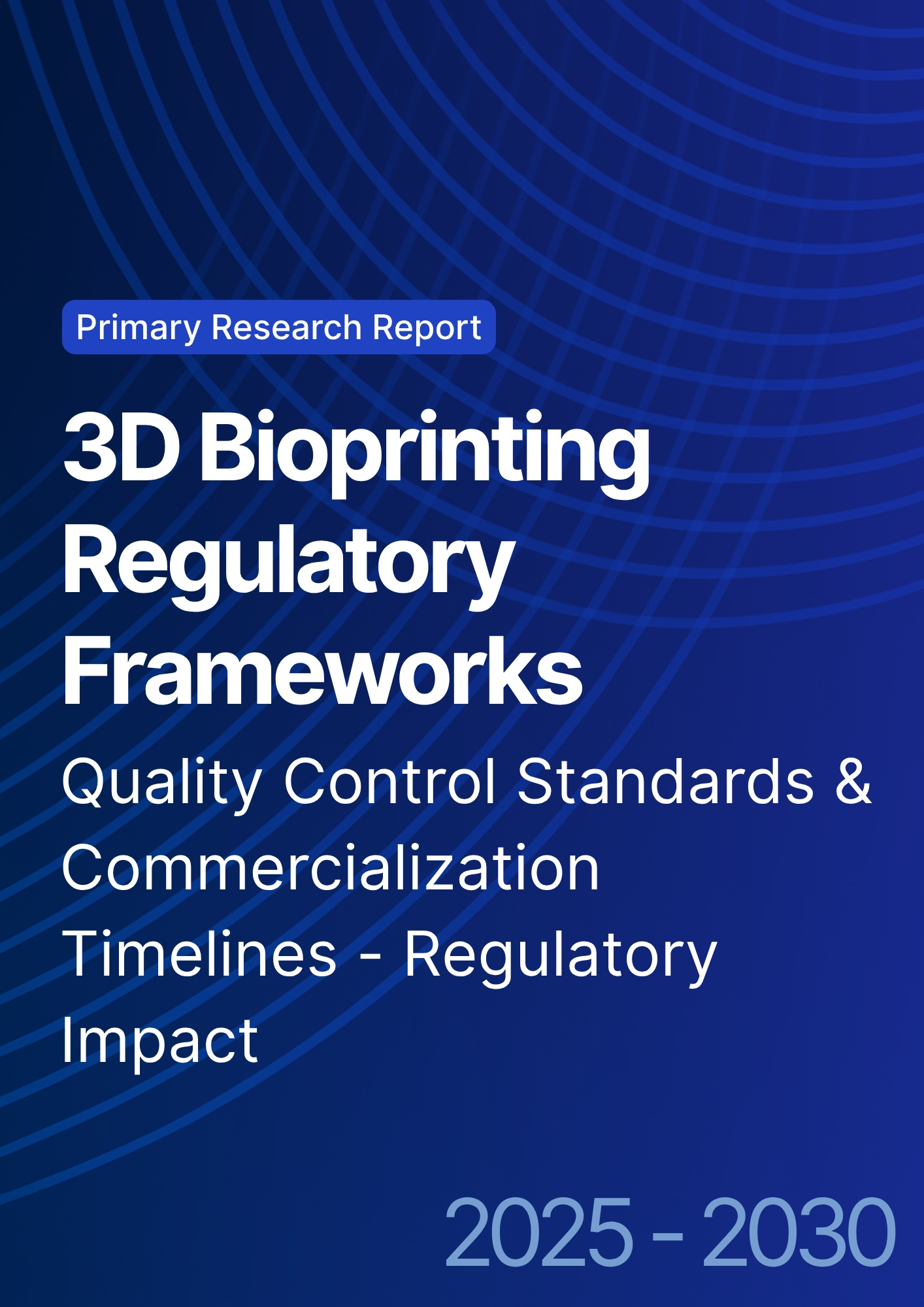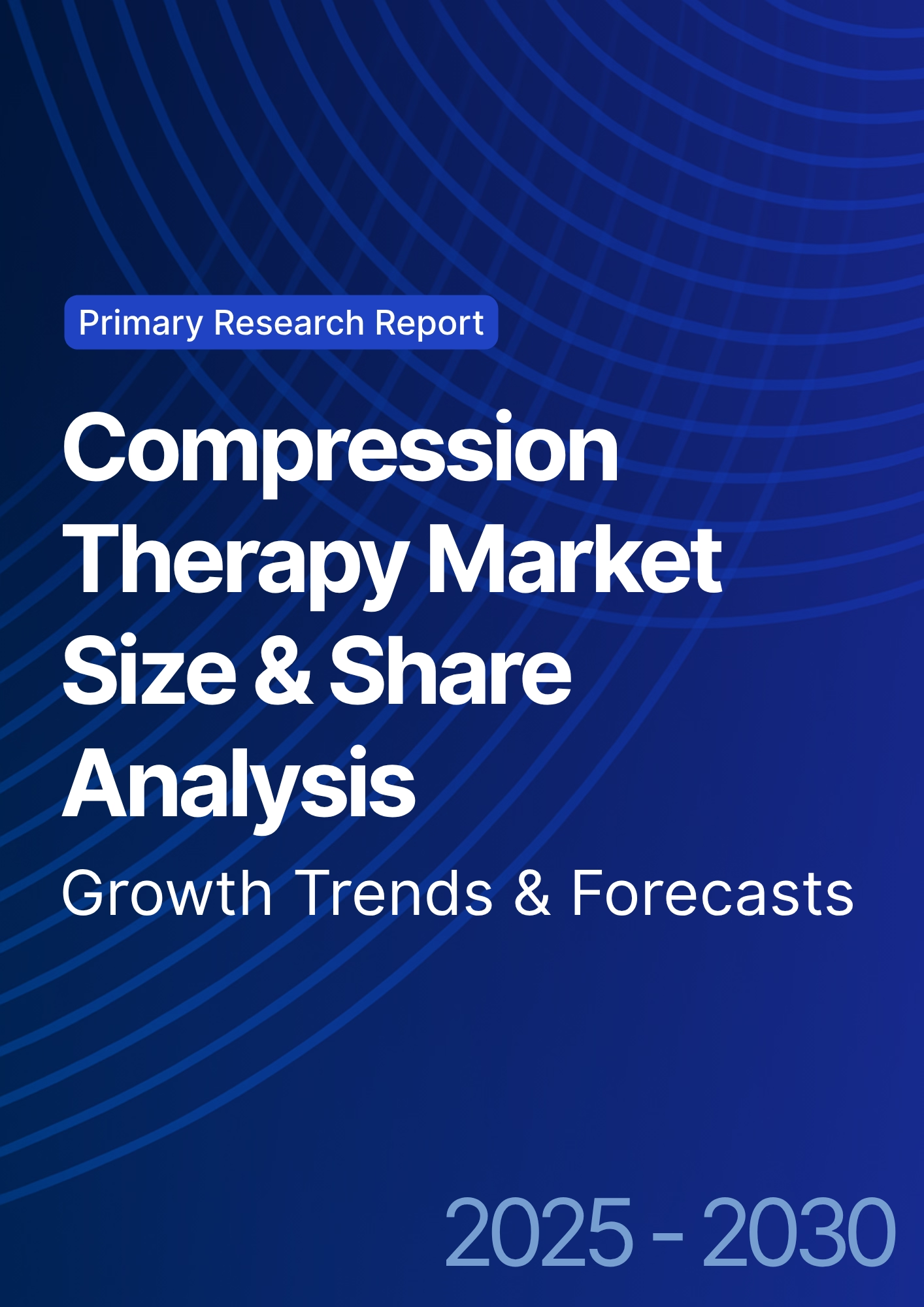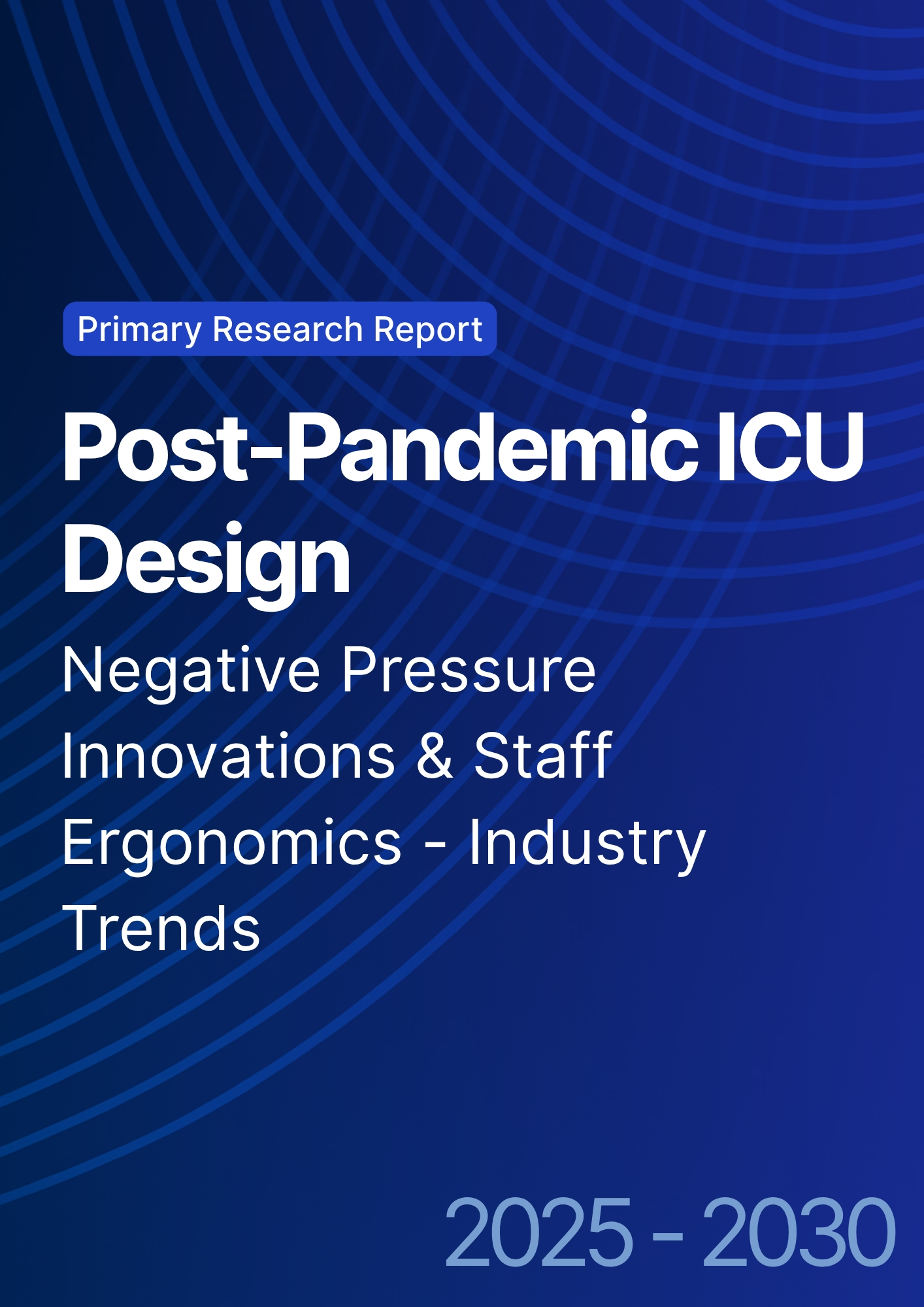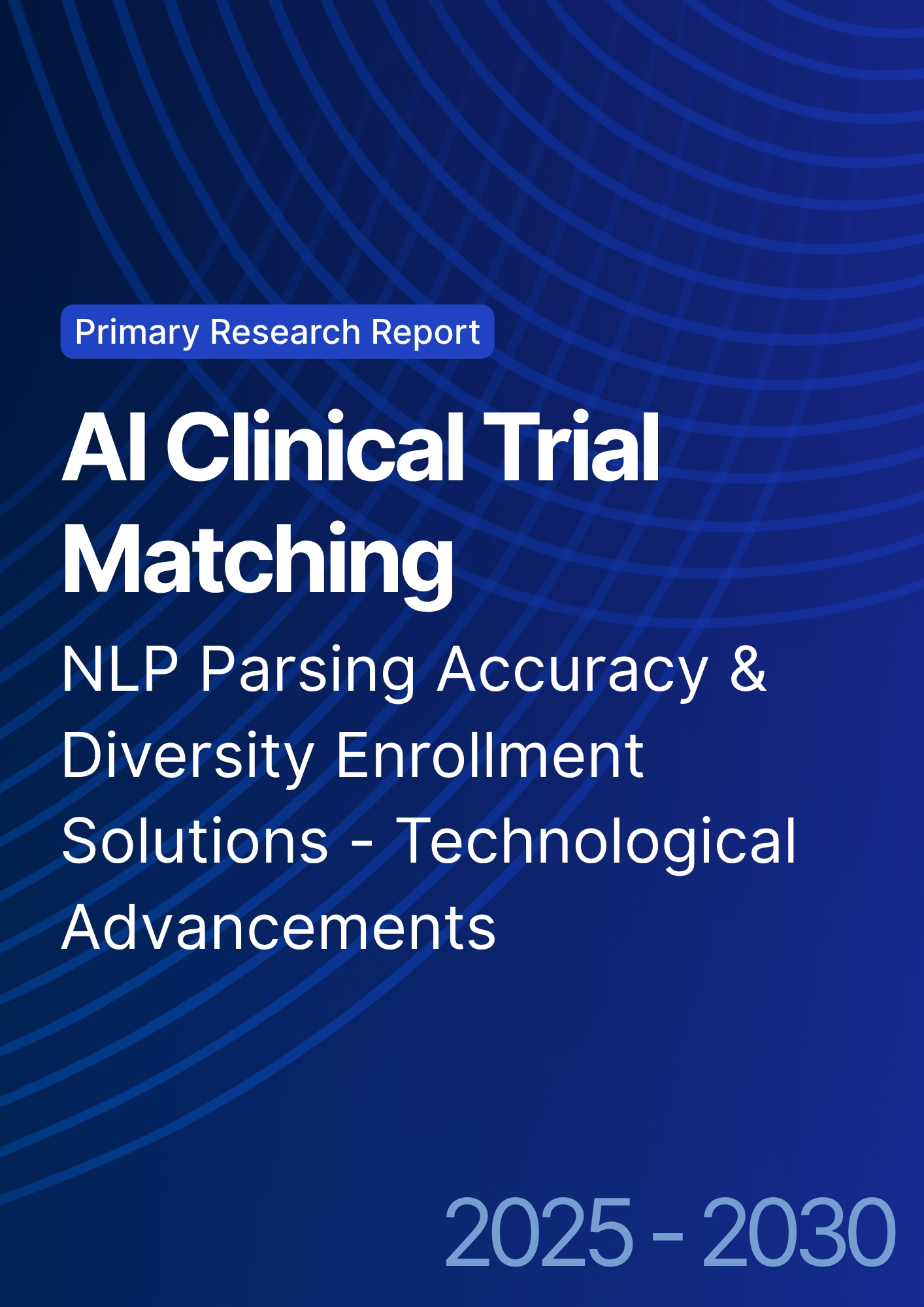

68 Circular Road, #02-01 049422, Singapore
Revenue Tower, Scbd, Jakarta 12190, Indonesia
4th Floor, Pinnacle Business Park, Andheri East, Mumbai, 400093
Cinnabar Hills, Embassy Golf Links Business Park, Bengaluru, Karnataka 560071
Connect With Us
3D Bioprinting Regulatory Frameworks: Quality Control Standards & Commercialization Timelines - Regulatory Impact
This research examines 3D bioprinting regulatory frameworks in Europe from 2025 to 2030, focusing on quality control standards and commercialization timelines. The report explores how evolving regulations, safety protocols, and quality assurance frameworks will shape the adoption of 3D bioprinted tissues and organs. It provides insights into market growth, regulatory compliance, and expected time-to-market for commercial applications. The study is designed for biotech companies, regulators, and investors, highlighting the challenges and opportunities for commercializing 3D bioprinting technologies in Europe.

What's Covered?
Report Summary
Key Takeaways
- European 3D bioprinting regulatory market projected to grow from €150 million in 2025 to €1.8 billion by 2030, CAGR 50%.
- Clinical-grade 3D bioprinted tissue approvals expected to increase 45% by 2030.
- Compliance with EU quality control standards projected at 85% among commercial bioprinting operations.
- Time-to-market for 3D bioprinted products expected to reduce from 48 months in 2025 to 28 months by 2030.
- Manufacturing cost reduction of 30% projected via streamlined regulatory processes.
- Institutional adoption by research hospitals and biotech firms projected at 65% by 2030.
- Standardized bioprinting protocols expected to improve product reproducibility by 50%.
- Cross-border clinical trials in Europe projected to increase by 35% by 2030.
- Revenue from commercialized bioprinted tissues and organs expected to grow by 40% annually.
- ROI from regulatory-compliant bioprinting commercialization projected at 20–25% by 2030.
Key Metrics
Market Size & Share
The European 3D bioprinting regulatory market is projected to grow from €150 million in 2025 to €1.8 billion by 2030, reflecting a CAGR of 50%. This growth is driven by the increasing adoption of regulatory-compliant 3D bioprinting technologies for clinical and commercial applications. By 2030, clinical-grade 3D bioprinted tissue approvals are expected to increase 45%, enabling broader use in regenerative medicine, organ transplantation, and personalized therapies. Institutional adoption by research hospitals and biotech companies is projected to reach 65%, reflecting increasing investment in bioprinting technologies. Compliance with EU quality control standards is projected at 85%, ensuring safety, efficacy, and reproducibility. Time-to-market for commercial 3D bioprinted products is expected to decrease from 48 months in 2025 to 28 months by 2030, driven by streamlined regulatory pathways and harmonized guidelines. Manufacturing costs will decline by 30%, reflecting improved process efficiency and reduced trial-and-error in compliance. Standardized protocols will improve product reproducibility by 50%, increasing investor confidence and accelerating adoption. Cross-border clinical trials in Europe are projected to increase 35%, supporting faster clinical validation. Revenue from commercialized tissues and organs is expected to grow 40% annually, driven by higher adoption and market demand. ROI from regulatory-compliant commercialization is projected at 20–25%, reflecting gains from improved efficiency, lower compliance costs, and faster market access. Overall, regulatory harmonization is enabling scalable, cost-effective, and safer 3D bioprinting commercialization across Europe.
.png)
Market Analysis
The European 3D bioprinting regulatory market is projected to expand from €150 million in 2025 to €1.8 billion by 2030, CAGR 50%, driven by growing adoption of clinical-grade bioprinted tissues and organs. Regulatory compliance and harmonization of EU quality control standards will enable more predictable commercialization timelines, reducing time-to-market from 48 months in 2025 to 28 months by 2030. By 2030, institutional adoption is expected to reach 65%, with research hospitals and biotech companies investing heavily in regulatory-compliant bioprinting technologies. Manufacturing costs will decline by 30%, driven by streamlined regulatory requirements, automated quality control, and standardized printing protocols. Product reproducibility is projected to improve 50%, as firms implement harmonized standards across printing, tissue maturation, and testing processes. Cross-border clinical trials are projected to increase 35%, facilitating multi-country validation and faster regulatory approval. Revenue from commercialized 3D bioprinted products is expected to grow 40% annually, reflecting the market potential for regenerative medicine and organ transplantation. The projected ROI for regulatory-compliant commercialization is 20–25%, reflecting cost reductions, efficiency gains, and faster adoption. Regulatory clarity and harmonization are critical to supporting innovation, investment, and market growth, making European frameworks a catalyst for commercial-scale 3D bioprinting adoption.
Trends & Insights
The 3D bioprinting market in Europe is poised for rapid growth, projected from €150 million in 2025 to €1.8 billion by 2030, CAGR 50%. Emerging trends include the standardization of quality control protocols, accelerated regulatory approval timelines, and the integration of automated quality assurance systems. Clinical-grade tissue approvals are expected to increase 45%, supporting adoption in regenerative medicine, organ transplantation, and research applications. Time-to-market is projected to decline from 48 months to 28 months, driven by streamlined EU regulatory pathways and harmonized guidelines. Manufacturing costs are expected to decrease 30% due to process standardization and efficient compliance procedures. Product reproducibility will improve by 50%, enabling investors and healthcare providers to trust the consistency of bioprinted materials. Institutional adoption by research hospitals and biotech companies is projected at 65%, reflecting increased investment in compliant bioprinting technologies. Cross-border clinical trials are expected to increase 35%, supporting accelerated product validation across multiple European nations. Regulatory compliance adoption is projected at 85%, ensuring safer, standardized commercialization. Revenue from commercialized tissues and organs is expected to grow 40% annually, with ROI projected at 20–25%. These trends indicate that regulatory harmonization, coupled with innovative bioprinting protocols, will accelerate market adoption and investment in the European 3D bioprinting sector.
.png)
Segment Analysis
The European 3D bioprinting regulatory market is segmented into tissue types, institution type, and clinical vs. commercial applications. Tissue engineering for organ transplantation will represent 40% of total market share, followed by bioprinted scaffolds and regenerative tissue at 35% and customized therapeutic tissues at 25%. Institutional adoption is projected at 65% by 2030, primarily driven by research hospitals, biotech firms, and contract development organizations. Compliance with EU quality standards is projected at 85%, enabling uniform production protocols and reproducible outcomes. Time-to-market reduction from 48 months to 28 months will improve commercialization efficiency. Manufacturing costs are projected to decrease 30%, while product reproducibility improves 50%. Cross-border clinical trials will increase 35%, supporting multinational regulatory approval and wider adoption. Revenue from commercialized tissues and organs is projected to grow 40% annually, with ROI at 20–25%, driven by faster market access, standardized quality control, and broader adoption. Segment analysis highlights that regulatory frameworks are key enablers of market scalability, ensuring bioprinting technologies meet safety, quality, and commercialization requirements.
Geography Analysis
The European 3D bioprinting market is expected to grow from €150 million in 2025 to €1.8 billion by 2030, with adoption concentrated in Western Europe (Germany, France, UK) and Nordic countries due to advanced biotech infrastructure. Clinical-grade tissue approvals will increase 45%, and compliance with EU quality standards is projected at 85%, ensuring safe and standardized commercialization. Institutional adoption by research hospitals and biotech companies will reach 65%, while time-to-market for 3D bioprinted products decreases from 48 months to 28 months. Cross-border clinical trials in Europe will increase 35%, supporting faster regulatory approval and harmonization. Manufacturing costs will decline by 30%, and product reproducibility will improve 50%, enabling confidence in clinical applications. Revenue from commercialized tissues and organs is projected to grow 40% annually, while ROI is expected at 20–25%. The European market will benefit from harmonized regulations, facilitating innovation, market adoption, and cross-border commercialization of 3D bioprinting technologies.
.png)
Competitive Landscape
The European 3D bioprinting regulatory market is competitive, with leading companies such as CELLINK, Prellis Biologics, Poietis, and Allevi offering regulatory-compliant bioprinting solutions. These companies focus on tissue reproducibility, quality assurance, and commercialization timelines, serving research hospitals, biotech firms, and pharmaceutical companies. By 2030, institutional adoption is projected at 65%, with revenue growth of 40% annually. Cross-border clinical trials will grow 35%, facilitated by harmonized EU regulations and standardized quality protocols. Time-to-market is expected to reduce from 48 months to 28 months, while manufacturing costs decline 30%, improving ROI to 20–25%. Regulatory compliance is projected at 85%, ensuring safe commercialization. Companies adopting standardized protocols and maintaining EU regulatory compliance will gain competitive advantage, while early movers in bioprinting commercialization will capture significant market share. Overall, partnerships between regulatory bodies, biotech firms, and research institutions will define the competitive landscape, enabling faster market adoption and innovation.
Report Details
Proceed To Buy
Want a More Customized Experience?
- Request a Customized Transcript: Submit your own questions or specify changes. We’ll conduct a new call with the industry expert, covering both the original and your additional questions. You’ll receive an updated report for a small fee over the standard price.
- Request a Direct Call with the Expert: If you prefer a live conversation, we can facilitate a call between you and the expert. After the call, you’ll get the full recording, a verbatim transcript, and continued platform access to query the content and more.


68 Circular Road, #02-01 049422, Singapore
Revenue Tower, Scbd, Jakarta 12190, Indonesia
4th Floor, Pinnacle Business Park, Andheri East, Mumbai, 400093
Cinnabar Hills, Embassy Golf Links Business Park, Bengaluru, Karnataka 560071
Request Custom Transcript
Related Transcripts


68 Circular Road, #02-01 049422, Singapore
Revenue Tower, Scbd, Jakarta 12190, Indonesia
4th Floor, Pinnacle Business Park, Andheri East, Mumbai, 400093
Cinnabar Hills, Embassy Golf Links Business Park, Bengaluru, Karnataka 560071













